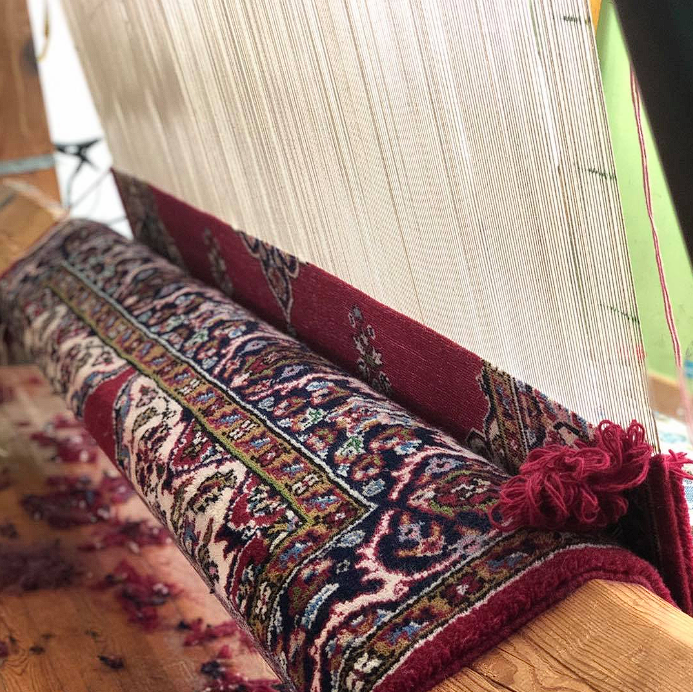
The main stages of carpet making
The initial stages mentioned in the preparation of the loom are no different from those mentioned in the above course sections. First, the weaving is carried out, in which two irons are used, nailed to boards at a distance equal to the dimension of the carpet, and the women (weavers) go around the irons, passing the thread as many times as the width of the carpet requires. A chain is then created in order to prevent the threads from tangling together and to facilitate weaving. The warp is transferred to the loom, first to the top instead of the bottom. The mitres through which the threads pass are woven directly onto the counterpart by hand.
Preparation of the Steak:
- Before weaving begins, a string is placed tightened and straightened twice as a base.
- The chain, the kilim, is created, which is a plain weft without knots (it is also inserted at the end of the carpet).
- The two threads, one thick and one thin, are fastened and the corner is also fastened.
- The weaver ties the thread, making knots in the stretched threads of the warp, cuts the thread and the process is repeated until a series of knots is completed.
- Then, when the row is finished, the ouija is knitted at the edge of the carpet (side), the thick weft (cotton thread passed between each row of knots) is passed through the comb and the threads are pulled.
- Crossing of threads:
- The threads are crossed with the help of the crossing wood, i.e. those that were in the back come to the front.
- Passage of the thin thread:
- Then, the fine thread is trimmed and beaten again with the comb to make the knots neater and the weave thicker.
- Knot trimming
- Finally, finishing is carried out by trimming the cut knots and stabilizing them to ensure the durability of the carpet. The use of the scissors allows the cutting of the tops of the knot threads in a uniform and controlled process. Depending on the pressure and cutting angle of the scissors, different pile thicknesses can be achieved.
- The carpet is completed with the fringes.
The selection of yarns from the same dye is equally important to maintain a uniform color tone. This ensures that the colour will remain stable during and after the manufacturing process. And ordering all the yarns from the same 'pot' ensures that the colouring is homogeneous. This approach is important to avoid possible variations in colour.
To summarize the carpet weaving guide, the use of good raw material is remarkable. The inclusion of high quality yarns in the process contributes to the durability and longevity of the carpet. In other words, careful screening of materials is essential to creating a quality product.
Carpet weaving as a whole therefore requires more effort, time and skill than weaving finer fabrics. The fact that the string is thick and stretched makes the process clearly more difficult for the pupils who decide to give it a try.
The quality of the carpet and its density depends on the knots. High quality means more knots per square metre, which increases the density of the carpet. However, this can also make the process considerably more demanding and time-consuming.
Last modified: Wednesday, 24 January 2024, 4:01 PM